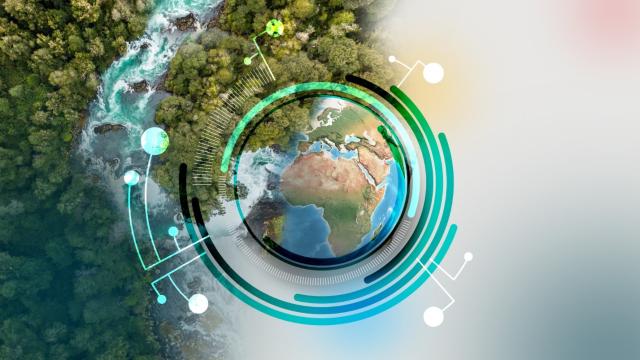Pioneering the use of EO for Ecosystem Accounting
The concept of Ecosystem Accounting is an integral part of the Natural Capital Accounting (NCA) conceptual framework that aims at measuring the stocks and flows of natural capital using the international adopted statistics standard for environmental accounting, System of Environmental Economic Accounting (SEEA EA). The standard describes how to account for individual environmental assets or resources, both biotic and abiotic as well as ecosystem assets, biodiversity and ecosystem services. An amendment of the EU Legislation (691/2011) is proposed by Eurostat to the European Parliament and the Council to start regular reporting from the reference year 2024 onwards.
Ecosystem Accounts are inherently spatial accounts, with the implication that they strongly depend on the availability of spatially explicit dataset, including Earth Observation. Earth Observation is widely recognized as a major source of information to monitor the extent, condition and services of their ecosystems. The emergence of dense EO data streams at appropriate scales from publicly-funded satellite missions such as the European Copernicus programme, combined with the advances in digital technologies offer unprecedented opportunities for countries to efficiently monitor the extent and conditions of their ecosystems, determine ecosystem services and implement their ecosystem accounting.
PEOPLE-EA's Objectives
The Ecosystem Accounting project (PEOPLE-EA) will study the relevance of Earth Observation for ecosystem accounts in terrestrial and freshwater ecosystems, and develop, validate and showcase a number of advanced EO solutions to produce ecosystem accounts, in physical terms, on ecosystem extent, condition and services. The project will contribute to the international collaborative efforts to advance the use of EO in Ecosystem Accounting (GEO EO4EA) and support countries developing their national ecosystem accounting.
The team will first conduct a comprehensive review of the opportunities and challenges to integrate EO in SEEA compliant national accounting.
Thereafter the team will develop an online tool to support ecosystem accounting at European national and regional scale (Tier-2/3) through combining several state-of-art techologies (INCA accounting models, ARIES semantic platform, openEO Earth Observation processing platform). This tool will be used to generate a number of 'EO for Ecosystem Accounting' demonstrators that show the value of Earth Observation in national ecosystem accounting of ESA/EU Member States. The accounts will be showcased and validated in cooperation, with five countries:
- Greece, via University of Patras
- Italy, via Italian National Institute of Statistics (ISTAT) and Italian National Institute of Environmental Protection and Research (ISPRA)
- Netherlands, via Statistics Netherlands (CBS)
- Norway, via Statistics Norway (SSB)
- Slovakia, via Institute of Landscape Ecology of the Vlovak Academy of Sciences (ILE-SAS)
"The implementation of Ecosystem Accounting depends on the collection, processing and analysis of an unprecedented amount of data, which go beyond the traditional socia-economic data that National Statistics Offices have been exploiting"
Marc Paganini - European Space Agency
Ecosysem Accounting can benefit from the availability of an increasing flow of EO data of suitable characteristics, and from the emergence of affordable technical solutions to address the size and complexity of such large data sets. But this requires the adoption of new technologies and new data sources in national statistical programmes.
"Our collective ability to harness the full potential of EO data sets, combined with the development of the necessary models and analytical framework, represent a tranformational opportunity for the National Statistical Offices. The PEOPLE-EA project, led by VITO, will bring an important contribution to advance the use of EO in the SEEA EA framework."
Marc Paganini - European Space Agency
PEOPLE-EA is sponsored by ESA, has been officially kicked off on October 6, 2022 and will end in April 2024. The project is led by VITO Remote Sensing (Belgium) in cooperation with BC3 Research (Spain), Ecounting (Netherlands) and University of Patras (Greece).

